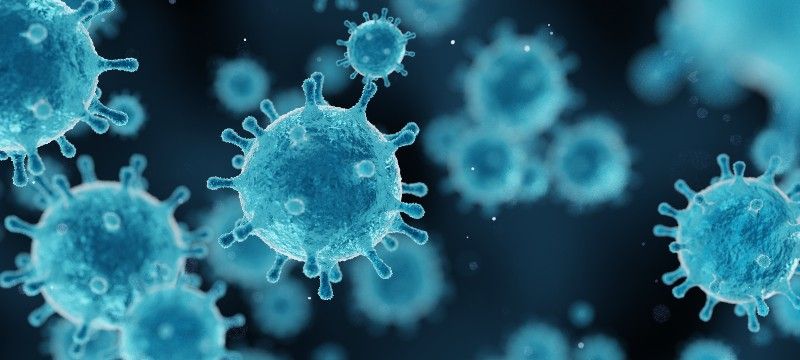COVID-19 Antiviral Ensitrelvir Presented at ECCMID in 2 Posters
At the European Congress of Clinical Microbiology & Infectious Diseases (ECCMID), 2 posters about the COVID-19 antiviral, ensitrelvir, will be presented. ICT found out more about what they say.
COVID-19
(Adobe Stock #333090694 by Creative Wonder)

COVID-19 viral and symptom rebound is an ongoing concern in the fight against the disease. One tool health care workers have are antivirals. Shionogi will present 2 late-breaking posters of their investigational COVID-19 antiviral, ensitrelvir, at the European Congress of Clinical Microbiology & Infectious Diseases (ECCMID), which will be held in Copenhagen, Denmark, on April 15-18, 2023.
“ECCMID has become one of the most comprehensive and influential congresses in the field of infection and an exciting networking place bringing together >14,000 colleagues from all over the world. The Scientific Programme is built by the ECCMID Programme Committee (EPC), an independent group of experts representing all disciplines related to clinical microbiology, infectious, infection control and prevention, and public health,” according to the website.
To learn more about the posters presented at the ECCMID, Infection Control Today® (ICT®) asked Simon Portsmouth, MD, Shionogi’s head of clinical development, to explain why they were important.
ICT: A summary of the key findings and why they are important.
Simon Portsmouth, MD: First, it is important to note that in the US, ensitrelvir is an investigational oral antiviral for COVID-19. In terms of the findings, viral rebound in COVID-19 patients has been described, although the frequency and nature of this are less understood. The data from this posthoc analysis demonstrated that viral rebound was infrequently seen up to 21 days after 5 days of treatment with ensitrelvir. There was no notable symptom recurrence associated with ensitrelvir. The study collected symptom and virology data through Day 21 of follow-up, and this analysis assessed rebound and symptom recurrence from blinded prospectively collected data on Days 9, 14, and 21.
Viral RNA rebound by PCR testing was observed in 7.8% of patients treated with 125 mg ensitrelvir (n = 590) and 4.7% of patients in the placebo group (n = 574). Although PCR testing identified viral presence in some patients, viral titer rebound (measured by culturing the virus to see if it is viable and able to replicate) was observed in just one patient treated with ensitrelvir 125 mg (0.3%). Understanding the frequency of viral rebound and symptom recurrence in patients is important to help define the role of antivirals as potential treatments.
A second abstract at ECCMID will discuss the effects of ensitrelvir compared to placebo in individuals testing positive for SARS-CoV-2 but without symptoms (asymptomatic) and in those with only mild symptoms. These individuals were not eligible for the main Phase 3 part of the Phase 2/3 study, where at least moderate symptoms were required for study entry.
This study showed significant effects on reducing the RNA viral load and duration of shedding of the culturable virus. This may have implications for transmission, which will be explored in future studies. Surprisingly, few individuals in this study progressed to symptomatic disease or had an aggravation from mild symptoms to more severe symptoms. In these endpoints, ensitrelvir had some non-significant effects.
ICT: What is the practical application for this study's key findings for infection preventionists?
SP: COVID-19 continues to affect individuals around the world. There is an ongoing need for additional treatments that can resolve symptoms and are infrequently associated with symptom recurrence. In the viral RNA rebound and symptom recurrence study, data suggest symptom recurrence was not associated with ensitrelvir treatment.
Similar to previous results in the mild/moderate patient population, the asymptomatic/mild symptom study demonstrates the potential of ensitrelvir to significantly reduce the period of infectivity in this population, which may have implications for reducing the risk of transmission. These results are exploratory and further validation is necessary.
ICT: What results surprised you, if any?
SP: It was encouraging to see no symptomatic recurrence associated with viral RNA rebound. The lack of association between the RNA rebound, symptoms, and viral culture helps define the role of antivirals in treating acute COVID-19 and the potential, yet to be definitively demonstrated, for prevention of transmission.
ICT: What, if any, future research will there be related to these studies?
SP: Shionogi is investigating ensitrelvir across a range of patient populations. A separate Phase 3 study of ensitrelvir (SCORPIO-HR) is underway across Asia, Africa, North America, South America, and Europe in non-hospitalized adults who have tested positive for SARS-CoV-2. It includes those with and without risk factors for severe disease and regardless of vaccination status. Shionogi also plans to initiate a post-exposure prevention global Phase 3 study, SCORPIO-PEP, and a global Phase 3 pediatric study evaluating the safety and effectiveness of ensitrelvir for children between the ages of 6-12. Alongside that,the US National Institute of Allergy and Infectious Diseases is running a global multi-site clinical trial evaluating ensitrelvir in hospitalized patients for the management of COVID-19.
More information on Shionogi’s ensitrelvir clinical program can be found here.
ICT: Is there anything else that you would like to add?
SP: With the sustained prevalence of COVID-19, there is a need for more treatment options that have the potential to benefit a broad range of patients.










2 Commerce Drive
Cranbury, NJ 08512
